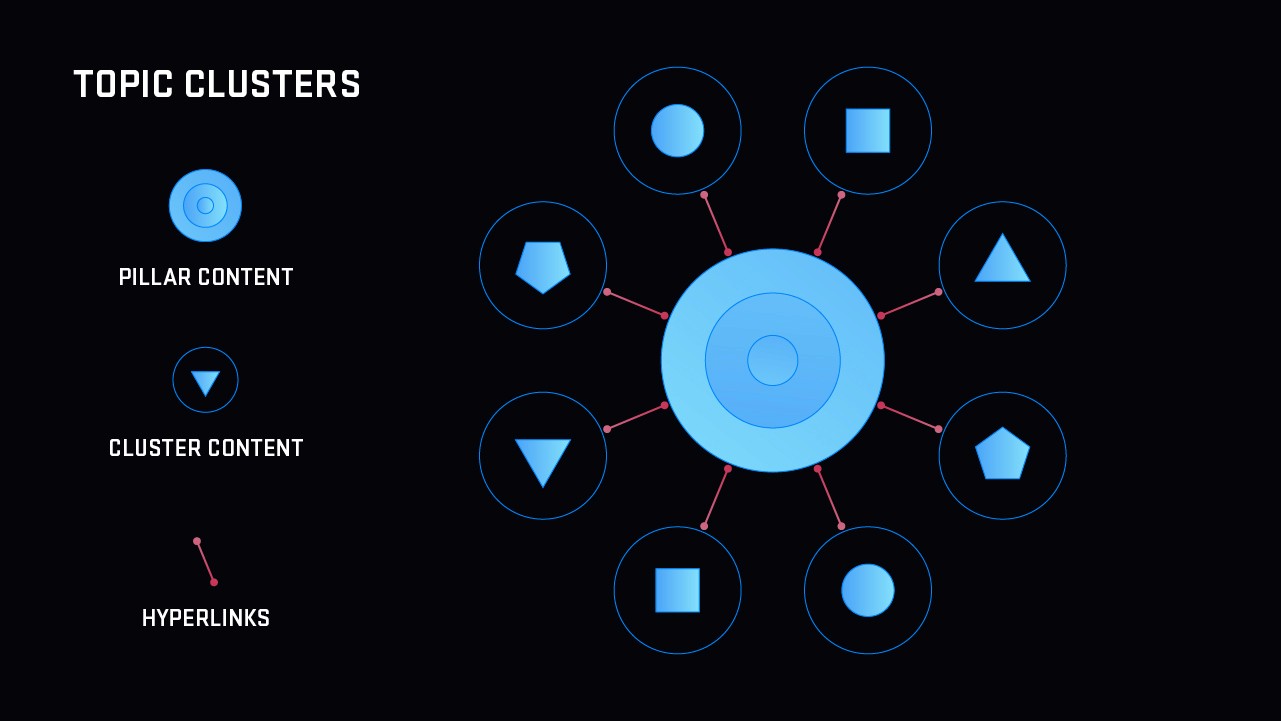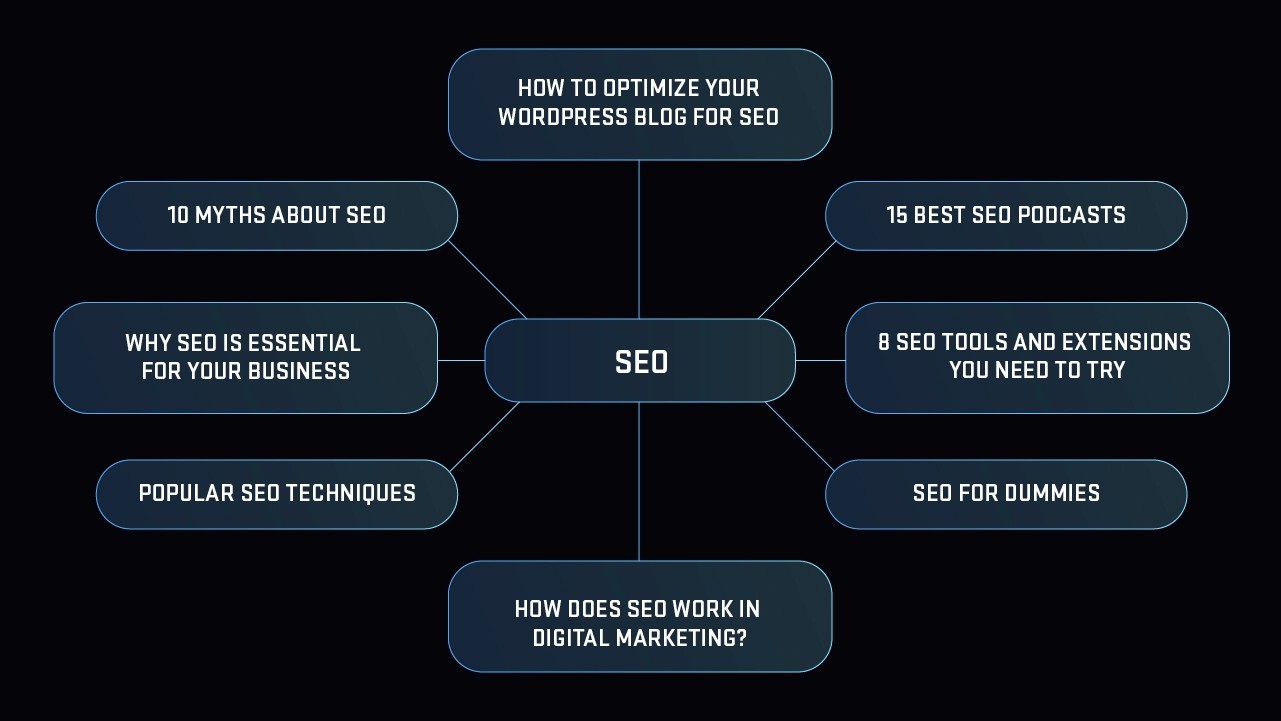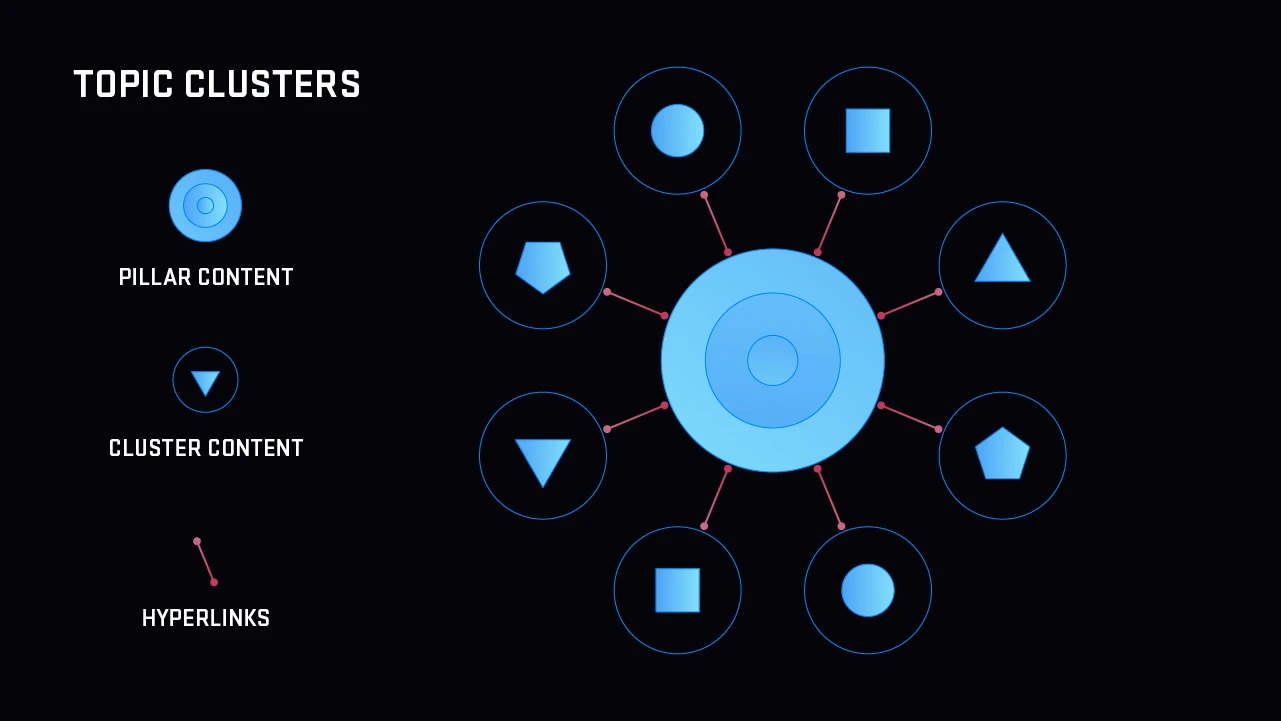Topic Clustering: Revolutionizing SEO Optimization
SEO optimization has been stagnant over the past several years according to industry experts. The cycle of creating and optimizing content has been going on for what seems to be an eternity.

This is the mentality that plagued me and my colleagues for quite a while. We are a small marketing enterprise with local clientele and no real aspirations to go global. I’ve started my career by writing articles for a few bucks a pop not knowing that it would one day lead me to open my own marketing startup.
Creating written digital content is something that I made my name doing but like any other activity, writing becomes mundane after a while. However, once the word of topic clustering got around the internet, we raised our collective eyebrows. How could this new SEO technology change what has now become a stagnant and repetitive process of SEO optimization and content planning?
Luckily, Google has ensured that SEO never looks the same after recent changes implemented into their SERP. Daniela McVicker, a blogger working for RatedByStudents has put it like this: “It’s up to no one but us to ensure that topic clustering becomes the predominant content planning methodology.” Topic clustering is quickly becoming the go-to methodology of creating new content and content marketing as a whole.
If that’s the case, what is topic clustering supposed to do exactly? How can we benefit from using it and is it difficult to implement it into our current workflow? Let’s take a look at the answers to those questions and see if we can determine whether or not topic clustering is really worth the effort.
We will cover the nitty-gritty details of topic clustering as the industry has coined them. There is nothing we can do to change the terminology or the rulebook set by Google’s SERP. However, we can make the process more familiar and accessible by sharing a story of how we handled our first topic clustering project for a client that paid well but didn’t know much about SEO. With that said, let’s dive right in.
Topic Clustering Basics
Topic clustering isn’t as complex as the word makes it seem. The entire process can parallel with cooking of all things. The title of this new SEO trend reveals everything we need to know about “topic clustering”.
Creating clusters of topics based on a single topic (a pillar) can ensure easier site navigation, better SEO, and more traffic. This is what the entire process is all about.

When SEO specialists talk about topic clustering, they often talk about the creation of interconnected content that can serve as a platform for link building and SERP optimization. This is also a true statement as topic clustering can indeed help you create an intricate web of on-site links with no need to include outbound links.
Reaching position 0 on Google’s SERP suddenly became much easier thanks to the process of clustering similar topics into a cluster and making it easier for SEO to register correctly. This is the task we were presented by our client once topic clustering became the next big thing on the SEO scene. He was a representative of a medical company that specialized in online sales and blogging about personal patient stories.
Reaching position 0 is quite possible even without investing hundreds of dollars into advertisement – but it’s not easy. We have decided to rely on topic clustering as a means to boost their ranking over the next several months and see if it would bear any fruit.
Getting accustomed to a new piece of technology is never easy, especially since we couldn’t say no to our small firm’s client. We started searching for ways to implement topic clustering into existing blogging practices they already have in order to make the transition as seamless as possible.
This has led us to understand more about the pros of using this technology and that it can actually make a difference in the now dormant and standardized SEO scene. So, what are the direct benefits of using topic clustering as opposed to manual SEO optimization and the use of corresponding plugins?
Benefits of Topic Clustering
There is no point in implementing a new piece of technology if it brings no benefits to the table. In terms of topic clustering, the pros far outweigh any time and effort you will put into properly clustering your content:
1) Semantic search optimization – People often look for content based on descriptive phrases, not keywords themselves. This makes topic clustering a viable option as your content will ping more often thanks to the different content attached to the same topic.
2) Better SERP relationship – Your site will have a better standing with SERP including Google, Bing, Yahoo, and other popular engines. This is due to the fact that your content will become easier to register as a cluster.
3) Professional organization – Once a user reaches your site, they will have a much easier time navigating through your content. If they put interest in a certain topic, all they have to do is look for that specific cluster.
4) More traffic and conversions – As the content becomes more modern and professional, so will your traffic. People quickly spread word of mouth of content that might be interesting to their network and social media.
5) Easier site management – When it comes to content planning and creation, you will have a much easier time organizing your time. Coming up with pillar content and branching out into different related content types is easier than regular content creation cycle management.
Pillar Content Brainstorming
If you haven’t realized by now, your pillar content represents the most important part of topic clustering. The pillar you create at the beginning of your content cycle will remain at the center of your content creation for the next several weeks. Make sure to always go for the topic that might be interesting to your audience according to the industry you operate in.
For example, if you are a content optimization website dedicated to blogging about SEO, ranking, etc. you might want to consider a topic related to those subjects. Let’s consider “search ranking” as our pillar content. In this example, we can create several branches of content that correlate with the pillar we chose. These content pieces can look like this:
- Search engine tips for professional SEO
- Which search engine optimization tools are the best on the market?
- The pros and cons of search engine optimization for small businesses
As you can see, the word “search engine” was present in all three cases. Depending on the topic you choose, you should always strive to include the pillar content words in your article titles. This will ensure adequate SEO and rank your content accordingly the next time someone looks for relevant phrases and keywords.
Coming up with pillar content for our client wasn’t difficult – they basically did most of the work for us. It’s important to understand that most people already cluster their content without actually calling it that. Any time you write three articles on the same subject you create a cluster.
Since our client worked in the medical niche which is a scientific field with very strict terminology and vocabulary the pillars weren’t difficult to pinpoint and stick to. Explaining this to our client led us to create several pillars which we would implement on their blog in order to piggyback from Google’s SERP and rank the site higher than before. All that was left was to implement our findings in the field (pun intended) and see how the audience and Google would react.
If you are unsure as to how content optimization works, you can use a third-party service to help you out. Writing services can easily optimize your content according to the pillar you selected and create an appropriate topic cluster for your site. Some of the best professional writing services on the market include RewardedEssays, SupremeDissertations, FlashEssay, GetGoodGrade, and HotEssayService respectively. Each of these services offers a distinct type of writing which means that you will find something for your site in at least one of them.
With that in mind, the most important part of topic clustering will always be the pillar content brainstorming. If you nail the pillar on the head, your subsequent branches of content will organically bring traffic and conversions to your site.
Content Planning Integration
Now that we have a better understanding of pillar content, what can we do about content cycle implementation? After all, the purpose of topic clustering is to fully transform the way we create and track content over the following content calendar.
You will be happy to know that integrating topic clustering methodology into existing pipelines isn’t as difficult as it seems. All you have to do is start from the content planning phase, you can use a handful of tools, such as map mind makers to keep your ideas organized, and work your way forward from there. Or at least, this is what we hoped for. The thing about implementing topic clustering into a workflow that hasn’t changed for years means that mistakes are bound to happen. Our client’s writers didn’t take kindly to our meddling in their work and called it “an unnecessary complication”.
While I do agree with their view to an extent, topic clustering is there to help, not create problems. Once we sat down with their team of writers and talked about how SEO works, things went off pretty smoothly. We implemented topic clustering methodology into their writing process and asked them to check back with us regularly with updates, suggestions, and feedback.
We broke down the topic clustering implementation process into several easy-to-follow steps. This is by no means a definitive guide – it’s just a step-by-step that worked for us and worked well. Let’s take a look at a content cycle with topic clustering in mind so that we can better understand how it differentiates from traditional content planning:
1) Create a pillar – As we’ve mentioned before, your pillar is the backbone of your content cycle. Before you do anything else, make sure that your pillar becomes set in stone (pun intended). Take keywords into consideration in this phase.
2) Branch out content – Start from your pillar, work your way out and create related topics. Every topic you take into consideration should be closely connected to the pillar. Don’t take keywords into consideration in this phase.
3) Schedule your content – Make sure to always have a clear posting schedule for your content. Let your audience and SERP get accustomed to a steady stream of new content. Once you establish a routine, it will be easier to create new clusters for future content cycles.
4) Implement site SEO – While your topics might be under topic clustering’s influence, your site itself isn’t. Make sure to optimize any multimedia content you have present as well as to eliminate any plugins that might be unnecessary. The faster your site is, the better it will rank in addition to topic clustering.
5) Track your content – Every new piece of content should provide actionable data. You can use Nightwatch, Google AdWords, WordPress CMS analysis tools, and other online platforms in order to do so. This will give you the raw data necessary to eliminate wrong and uninteresting content from your future content clusters.
6) Ask for feedback – Your readers are the best source of feedback and suggestions. Ask them about the topic clustering methodology you implemented recently and what they would change about it. It only takes one comment to change your content strategy for the better – don’t pass on the opportunity.
Mistakes to Avoid
Before we wrap things up, I’d like to address some mistakes and missteps we made over the course of our project. These mistakes might seem arbitrary and insignificant to the naked eye.
However, if a high-profile client walks through your door and asks for topic clustering marketing advice, you better deliver on those requests. Here are some mistakes that you should absolutely avoid when working with SEO topic clustering methodology:
1) Don’t create content without a pillar. Creating content that doesn’t fall under the umbrella of an existing pillar has no place in your website. The worst thing you can do is create content and force it into a topic cluster with no rhyme or reason. Take your time and start from the center – work your way out from there.
2) Don’t post content sporadically. Topic clusters work best when you schedule your content and deliver it in even measures. As we’ve mentioned before, this will help your audience adjust to a steady flow of content and let Google schedule you for higher ranking at even intervals.
3) Don’t assume your content pillars. Keywords should be an integral part of your pillar content. Do proper research through Google AdWords or your preferred keyword analysis tool before creating pillars. Once you have a good amount of words to work with you can start thinking about finalizing your pillars and creating related topics.
4) Lastly, don’t assume your clients know your trade. Clients usually come to marketing experts because they don’t know what to do themselves. They might not know what topic clustering or SEO is – all they want is results. Make sure to educate your clients about realistic goals so that you can work up an agreement that works for both sides.
Final Thoughts
Working with our medical field client was a learning experience. While we knew some basics about topic clustering, our knowledge was far from actionable and presentable. The best way to learn something new is to actually try it out and see what works and doesn’t work.
We’ve managed to raise our client’s ranking to the rank just below position 0 which ended up being more than enough for them. In reality, they didn’t think that position 0 was a realistic goal to begin with – they wanted to see what we can do with the challenge presented to us.
Now that we have an understanding of how a topic cluster comes to exist, we can talk about actual implementation. As you can see, the process is eerily similar to traditional SEO content marketing with a few changes in the beginning of the cycle. Let’s recap what we have learned so far when it comes to topic clustering.
- Topic clustering is a method of literally “clustering” content under the same umbrella. You can do this by creating a single topic which we will explore through different angles and hypotheses.
- The pillar content represents the backbone of a topic cluster. This is the main topic which we will talk about in the forthcoming content cycle.
- Topic clustering is a much more user-friendly and SEO-friendly way of creating content as it follows semantic optimization logic. This means that people can find our content through logical queries instead of keywords.
- Topic clustering makes it much easier and faster to create new content, leaving room for tracking and planning.
Make sure to share this article with your fellow marketers and let us know what you think in the comments below!
